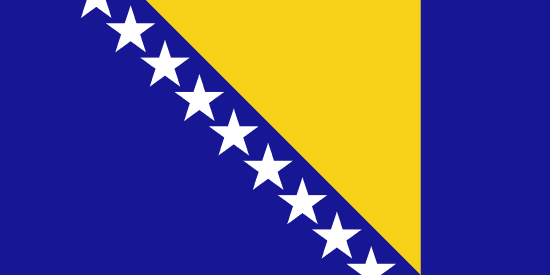"Sarajevo - srce Evrope | Sarajevo - Heart of Europe"
About:
Sarajevo, the capital of Bosnia and Herzegovina, was founded by the Ottomans in the 15th century. It flourished as a diverse cultural hub under Ottoman and Austro-Hungarian rule. The city is known as the site of the 1914 assassination of Archduke Franz Ferdinand, which sparked World War I. Sarajevo hosted the 1984 Winter Olympics but suffered during the 1992-1995 Bosnian War, enduring the longest siege in modern history. Today, it's rebuilding and reclaiming its reputation as a vibrant, multicultural city.
When to visit:
Sarajevo, the capital city of Bosnia and Herzegovina, is a destination that offers a unique blend of cultural heritage and natural beauty. To experience the best of what the city has to offer, it is recommended to visit during the spring or fall months. During these times, the weather is mild and pleasant, making it ideal for exploring the city's historic sites, such as the iconic Baščaršija district and the Latin Bridge. Additionally, visiting during these shoulder seasons allows for a more relaxed and less crowded experience compared to the peak summer months.
When to avoid:
Traveling to Sarajevo during the winter months, particularly in December and January, can present significant challenges for holidaymakers. The city experiences cold temperatures, often dropping below freezing, which can make outdoor activities uncomfortable for visitors. Additionally, Sarajevo may receive heavy snowfall during these months, leading to potential disruptions in transportation and sightseeing opportunities. Tourist attractions and local businesses may also have reduced operating hours during the winter season, limiting the overall holiday experience in the city.
Winter (Dec-Feb)
Winter in Sarajevo, from December to February, is the coldest part of the year with temperatures averaging from -2°C to 5°C. It's also the wettest with snowfall frequent, sometimes heavy, making it a popular time for skiing. Days are short with around 3-4 hours of sunlight and the sky is often overcast. An average day for a visitor might involve bundling up against the chill, navigating snow-covered streets, and enjoying winter sports or the city's indoor attractions.
"Summer (June-August)"
In Sarajevo, the warmest part of the year typically spans from June to August. During these summer months, the average high temperatures range between 25°C (77°F) and 30°C (86°F), while the average low temperatures usually hover around 15°C (59°F).
Rainfall is relatively low during this period with an average of 60-80 mm per month. The city experiences the most sunlight during these months, with an average of 8 to 10 hours of daylight per day. Humidity levels are moderate, usually ranging from 60-70%.
Cloudiness varies, but generally, there are more clear days than cloudy ones, particularly in July and August. Despite this, the city can still experience occasional summer storms which can bring brief periods of increased cloudiness and rainfall.
For a visitor, a typical day in Sarajevo during the warmest part of the year feels warm and sunny, but not excessively hot, making it comfortable for sightseeing and outdoor activities. The evenings are cooler, providing a pleasant respite from the daytime warmth. The moderate humidity ensures the heat is not oppressive, and the generally clear skies offer beautiful views of the city and its surroundings.
Language:
In Sarajevo, the capital city of Bosnia and Herzegovina, the most commonly spoken language is Bosnian. However, due to the city's diverse cultural history, Serbian and Croatian are also widely understood and spoken. Additionally, English is increasingly popular, particularly among the younger generation and in the tourism industry.




